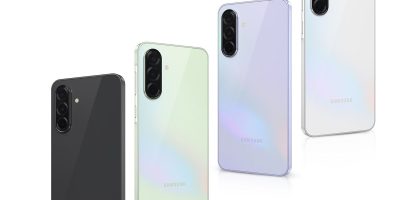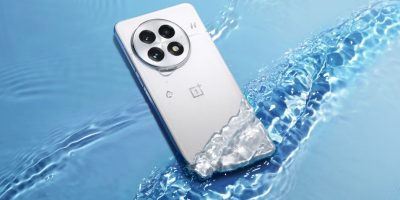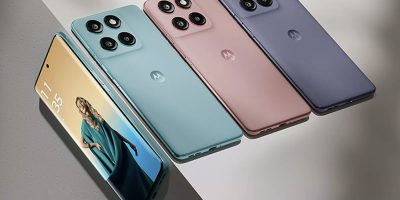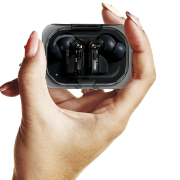Google has occasionally set the background of their homepage to black as a way to promote the environmental importance of energy efficiency (ex: Earth Hour). While the effort was intended to be symbolic, the idea that a monitor/screen uses less energy to display a black pixel than a white pixel became a big discussion point.
Apparently this same concept is what helps the Samsung Galaxy S and its American kin (Captivate, Epic 4G, Fascinate, Vibrant) conserve energy, thereby preserving precious battery life.
But is it true? After sites like Blackle popped up to leverage the theory and tree huggers like… well, treehugger… have supported efforts, Google themselves have come out denying any real benefit. The Big G provided evidence from sources such as the Wall Street Journal and one citation even suggested that black pixels required MORE energy than white pixels.
Samung’s SUPER AMOLED screen on the Galaxy S series is much different than your typical laptop or desktop computer so I won’t pass judgement on whether or not the representative is right or wrong. We would all love to see better battery life on our smartphones – the smarter they get the more juice they suck and hopefully they can keep pace with each other.
While we wait for official word from Samsung on the matter, what do YOU think about the black pixel design of the Samsung Galaxy S phones? Does it conserve energy?
[polldaddy poll=3412121]










OLED screens do not have backlighting. Typical LEDs have to backlight the entire screen, black or white, so there is no energy savings. With OLED screens black pixels are turned off, so there should be an energy savings.
There is an absolute simple test for this. Take two new phones, fully charge the batteries, put one on with a complete black background, put the other with a completely white background, and finally measure how long it takes to drain the battery. This needs to be done several times and alternate which background each phone uses.
This is not rocket-science. It can easily be proven. Anyone have 2 new phones to send me and I will run the tests?
I have a Nexus One which has an AMOLED screen, I can definitely say that having a white background vs black background I can see a huge difference in battery life. Black pixels aren’t drawing as much energy as white ones. That’s just how oled works, there isn’t any debating that.
It’s not just the Super AMOLED – the plain AMOLED screens (like on the N1 and Inc) produce power savings, too.
whats the resolution on this thing anyhow?
In modern cell phones, the screen is not what causes the biggest battery drain. Not even close in fact. So the battery performance increase will be negligible. However, any improvement in battery life is welcomed.
Scott, I have to disagree.
Every time I look at the battery usage on my Android phone, the display is by far the largest consumer of battery power.
@Ryan
I think it’s Awesome X Bada$$!! lol
@Scott
What?! According to my “battery usage” DISPLAY is always the top power drain on my Nexus One. If it is not the screen that is “not even close” to the top battery drain, what is the top user of power?
Correct. With OLED, black uses less power. LCD on the other hand, unless it has dynamic contrast (dimming the backlight when the majority of the screen is black so that it looks blacker), uses more power to make black (it has to fully activate the pixel to try and block the backlight from going through).
Scott: You are extremely wrong. These large screens are the biggest battery drain by far. With my usage, 65% of my battery.
Even if it is black doesn’t there have to be a light for you could see like in at night if you put a black screen there still has to be light or if not the screen would just look turned off
It apparently depends on the phone. On my incredible the screen is generally low on the battery usage scale. It averages between 4% and 12% of my battery usage.
There is no “maybe.” On organic LED displays, black represents the absence of light. There is no backlight. Black unquestionably conserves power on any OLED display.
On a TFT-LCD, this does not hold true as the backlight is constantly on.
Has anyone else experienced this on an Incredible. The display is NEVER the top battery drain. For it is always Android System or Cell standby. I thought the AMOLED was saving that much battery but now that I see you all say that your N1’s still show the display to be the biggest battery drain I’m wondering whats going on with my Inc.
Agreed! The “LED” in OLED means that each pixel emits its own light. Which means when a pixel needs to be black, it’s simply off, thus not using any power. LCD does not emit light, meaning they need a backlight to be on at all times. Either the whole screen is on or it’s off, doesn’t matter what color it is. So there is no question that AMOLED uses less power. And yeah, the screen is usually the biggest power hog by a huge margin.
This is easy to test… There is a flashlight app that lets you adjust brightness by expanding or shrinking the colored area of the screen (can’t remember the name). Turn off your screen timeout and use a flashlight app set to a white screen and let it kill the battery. Use the same flashlight app with the colored area reduced to a small point on the screen and let it kill the battery. Compare times…
@ Scott
Your an idiot.
The screen is the biggest user of battery power.
What are you smoking?
or you could just view a black picture (#000000) and a white picture (#FFFFFF) full screen to do the test.
CRT and OLED monitors benefit from black screens because they require more power to light up the pixels. LCD screens have backlights, and uses the liquid crystals to block out pixels that need to be dark.
Taking a poll on something like this is pointless. The most popular answer is not always the the correct one. Why not just do an experiment and post the results, which would be a lot more useful.
It saves battery because it can turn off the backlight where it is black; meaning no power usage while giving a completely actually black look
Don’t ASK people if it saves battery. It’s not like we decide.
It either DOES or it DOES NOT, or perhaps DOES a negligible amount.
As others have noted, the color impact on power draw varies widely depending on the display technology.
On a CRT (remember those things?), black pixels mean “do nothing”, and the electron gun is quite power hungry, so dark pixels mean substantially less power draw.
On an LCD, the main power draw is the backlight. The backlight is always on, period, and you’re just changing the filter in front of it. A black pixel means “filter completely”, which takes power. The power needed to enable the filtering on an LCD is drastically lower than the electron gun in a CRT, so I don’t know how much real difference it makes in practice.
I don’t know enough about AMOLED technology to say there for certain, but my understanding is that the cells are self-luminescent (the OLED part), so black is again the “do nothing” state. So if there is a difference, it would be in favor of darker pixels.
Whether or not it actually makes a difference in practice would need to be determined experimentally. I have not had the opportunity to do so.
I started running my nexus on a black background a few months ago after i decided to try to save as much battery as possible. It works great, and i dont really get battery issues too much anymore.
i think people have already covered this pretty well, but i do have a little to add.
as people have been saying, LCD screens have a constant backlight which is filtered by the liquid crystals to produce the different colors. hence there is little difference between “off” and “on” power draw. the exception is that most modern LCDs used for HDTVs have dynamic contrast, meaning they dim the backlight for dark scenes and turn it up for bright scenes. in this case, there is some power savings for scenes that are overall darker. the even more advanced LCD screen have LED backlighting, where there are many LEDs providing the backlight (as opposed to the tradition single fluorescent light). these LED backlit screens can dim the backlight in *areas* of the screen that are dimmer. that means part of the screen might have a dim backlight and part might have bright backlight. this gives better contrast as well as slightly more power savings. i’m pretty sure these advanced backlight technologies aren’t buil into phones, however.
you can think of AMOLED screens as an array of very tiny LEDs. an LED draws power when it is on, but not when it is off. therefore, an AMOLED screen with pixels that are off (black) will not draw power.
the answer to you question is: yes, AMOLED screens will use less power for a dark pixel. LCD screens (at least on phones) will not.
sourced from wikipedia
“Power consumption
While an OLED will consume around 40% of the power of an LCD displaying an image which is primarily black, for the majority of images it will consume 60–80% of the power of an LCD – however it can use over three times as much power to display an image with a white background[55] such as a document or website. This can lead to disappointing real-world battery life in mobile devices.”
Nice article! I use Black Google Mobile at http://bGoog.com to get a longer battery life on my Samsung phone and to reduce my data usage. I use it in Firefox on my computer too! On the newer AMOLED based screens you can use over 4x less power having a black background instead of white! That Google blog post is out of date and does not account for all the OLED based devices that are in use now and growing fast in popularity. There is more information on this at http://bGoog.com/about. Blackle is not mobile friendly at all and delivers search results with a white background on my phone!
How can yet set the black background on this phone. I have one and cannot figure it out
@Phillip Yeah, there is not a “no background” or “background color” option that I could find, so I had to use a 840×480 black image file. I suspect you could take a very dark picture and get most of the benefit (take pic, long tap background, and then set the wallpaper from the gallery of photos you took).
I have made a completely black background for my desktop and i can notice the battery savings. it definitely works. out of the andriod phones galaxy s has the most power saving options! also because of the super amoled screen i found even with the light sensor off and brightness turned all the way down the screen still looks bright enough to use except in sunlight you would need to crank the brightness.
well I just took a black pic of the inside of my hand, turned off the flash, and as I didn’t have a display of all black, that works nicely, and it’s fully black, I’ll let you know what happens after it’s fully charged
hello people just bought my sgs and i dont like the idea that it drains while in idle and standby mode… how do we deal with this.. i dont use my phone much cause work wont allow me too.. how do i prolong th elife of my batt… i turned the brightness all the way down, no wireless apps running.. less icons on the screen and i use black wallpaper
what else do i have to do… please help
can someone help me with my battery problem with my sgs thanks